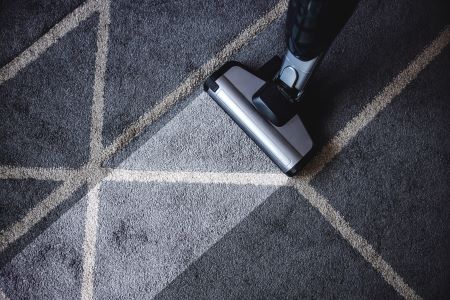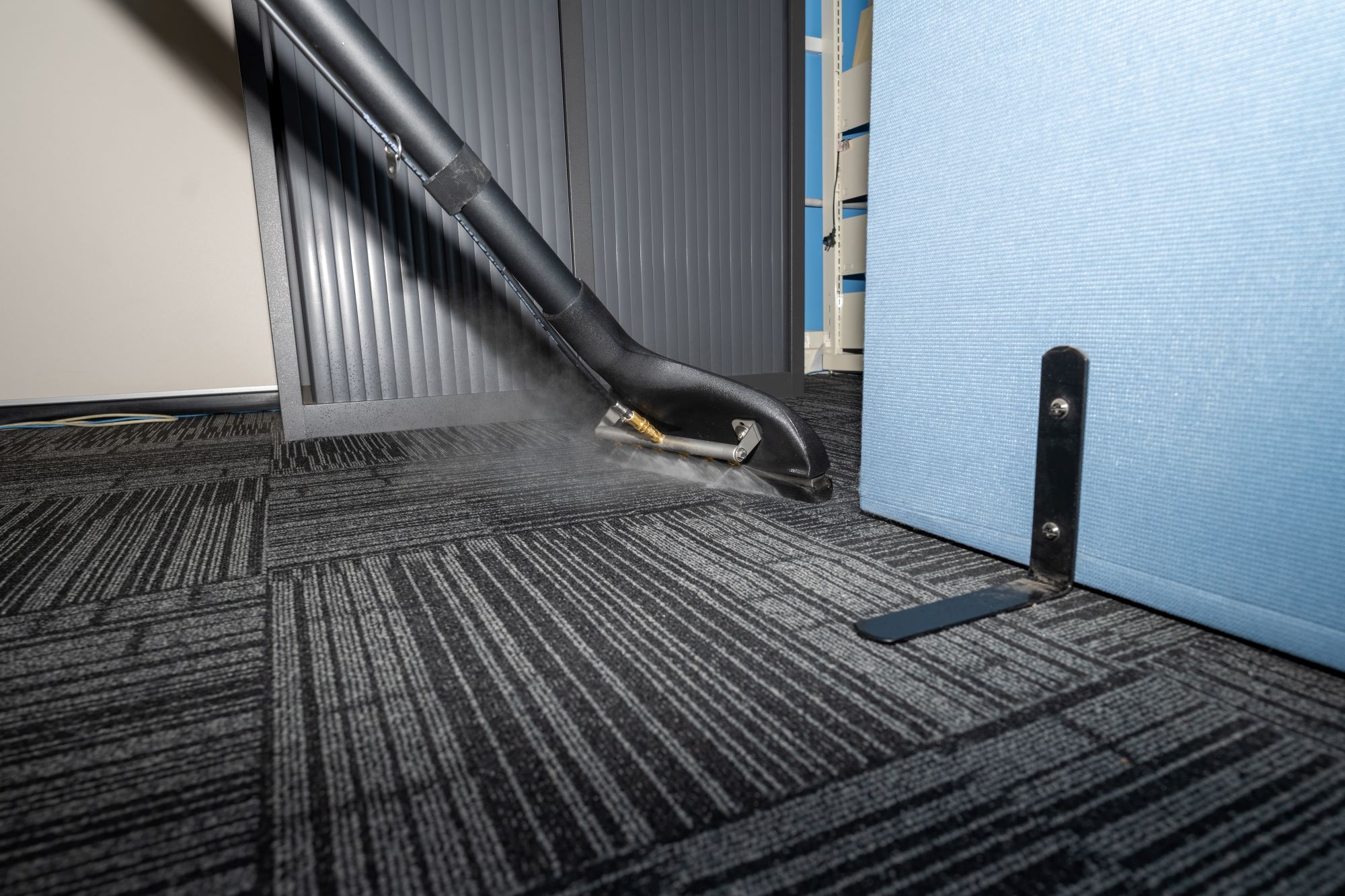Indoor air quality (IAQ) is a critical factor that influences the health and well-being of individuals in their homes and workplaces. Poor IAQ can lead to various health issues, including allergies, respiratory problems, and even more severe conditions. One significant contributor to indoor air pollution is dirty and contaminated carpets. This brings us to the question: Can carpet cleaning improve indoor air quality? In this comprehensive discussion, we will delve into various carpet cleaning methods, including steam carpet cleaning, green carpet cleaning, and carpet stain removal, to explore how they can positively impact IAQ and create a healthier living environment for occupants.
The Importance of Indoor Air Quality
Before we dive into the specifics of carpet cleaning methods, it’s crucial to understand the importance of indoor air quality and how it can affect our health. Indoor air quality refers to the condition of the air within and around buildings, particularly as it relates to the health and comfort of occupants. Poor IAQ can result from a variety of factors, including the presence of pollutants such as dust, allergens, volatile organic compounds (VOCs), and mold.
The significance of maintaining good IAQ cannot be overstated. Exposure to indoor air pollutants has been linked to a range of health issues, including:
- Allergies and Respiratory Problems: Pollutants like dust mites, pet dander, and mold spores can trigger allergies and exacerbate asthma and other respiratory conditions.
- Sick Building Syndrome (SBS): Prolonged exposure to poor IAQ can lead to a condition known as sick building syndrome, characterized by symptoms like headaches, fatigue, and irritations of the eyes, nose, or throat.
- Respiratory Infections: Mold and bacteria in the indoor environment can increase the risk of respiratory infections, especially in individuals with compromised immune systems.
- Long-term Health Effects: Continued exposure to indoor pollutants may contribute to more severe health problems over time, such as lung cancer, heart disease, and neurological disorders.
Given the potential health risks associated with poor IAQ, it becomes evident that taking steps to improve indoor air quality is essential. One of these steps involves maintaining clean carpets through various cleaning methods, each with its own advantages and disadvantages.
Carpet Cleaning Methods
There are several carpet cleaning methods available, each offering unique benefits and drawbacks. In the context of improving indoor air quality, three primary methods stand out: steam carpet cleaning, green carpet cleaning, and carpet stain removal. Let’s explore each of these methods in detail and assess their impact on IAQ.
Steam Carpet Cleaning
Steam carpet cleaning, also known as hot water extraction, is one of the most popular and effective methods for deep cleaning carpets. It involves the following steps:
a. Pre-inspection: The carpet is examined to identify stains, heavily soiled areas, and the type of carpet fibers.
b. Pre-treatment: A specialized cleaning solution is applied to break down and loosen dirt, stains, and contaminants in the carpet.
c. Steam cleaning: Hot water and a cleaning solution are injected into the carpet fibers, followed by immediate extraction using a powerful vacuum. This process removes dirt, allergens, and pollutants from deep within the carpet.
d. Drying: The carpet is left to dry, typically within a few hours.
Advantages of Steam Carpet Cleaning:
a. Thorough Cleaning: Steam cleaning effectively removes deep-seated dirt, dust mites, allergens, and bacteria from carpets, improving IAQ.
b. Allergen Reduction: The high-temperature steam kills dust mites and eliminates their allergenic waste products.
c. Minimal Chemical Use: Steam cleaning relies on hot water and eco-friendly cleaning solutions, reducing the use of harsh chemicals.
d. Versatility: It can be used on various types of carpets, including those made of natural fibers.
Impact on IAQ:
Steam carpet cleaning can significantly improve indoor air quality by removing allergens, dust mites, and other pollutants from the carpet. The thorough cleaning process reduces the potential for these contaminants to become airborne and circulate within the indoor environment. As a result, individuals with allergies or respiratory conditions may experience relief, and the overall air quality in the space can improve.
Green Carpet Cleaning
Green carpet cleaning is an eco-friendly approach to carpet maintenance that emphasizes the use of environmentally safe and non-toxic cleaning products and methods. This method aligns with the growing demand for sustainable and health-conscious cleaning practices.
Key Components of Green Carpet Cleaning:
a. Eco-Friendly Products: Green carpet cleaning relies on environmentally safe cleaning solutions that are biodegradable and free from harsh chemicals, VOCs, and synthetic fragrances.
b. Reduced Water Usage: Green methods aim to conserve water, which is especially important in regions facing water scarcity. Low-moisture cleaning techniques are often employed.
c. Energy Efficiency: Green cleaning companies may use energy-efficient equipment and practices to reduce their carbon footprint.
Advantages of Green Carpet Cleaning:
a. Healthier Indoor Environment: Green cleaning products reduce the release of harmful VOCs and allergens into the air, enhancing IAQ.
b. Safe for Pets and Children: Since green products are non-toxic, they pose no harm to pets, children, or anyone with sensitivities to chemical odors.
c. Environmentally Responsible: Green carpet cleaning aligns with sustainable practices, promoting a healthier planet.
Impact on IAQ:
Green carpet cleaning is inherently beneficial for indoor air quality. By using non-toxic, low-VOC cleaning solutions, this method minimizes the release of harmful chemicals and pollutants into the air. As a result, occupants can breathe cleaner, healthier air, and the risk of chemical sensitivities or allergies triggered by cleaning products is significantly reduced.
Carpet Stain Removal
Carpet stain removal, while not a comprehensive cleaning method on its own, plays a significant role in maintaining a clean and visually appealing carpet. Stains can be caused by various substances, including food, beverages, pet accidents, and more. If left untreated, stains can become breeding grounds for bacteria and mold, negatively impacting IAQ.
Advantages of Carpet Stain Removal:
a. Aesthetically Pleasing: Removing stains enhances the appearance of the carpet, making it look clean and well-maintained.
b. Prevents Odor and Mold: Stain removal helps prevent odors and mold growth, which can deteriorate IAQ.
c. Prolongs Carpet Life: Regular stain removal can extend the lifespan of the carpet by preventing permanent damage.
Impact on IAQ:
While stain removal primarily addresses aesthetic concerns, it indirectly contributes to improved IAQ. By eliminating potential sources of odors and mold growth, stain removal helps maintain a healthier indoor environment. Additionally, a clean and stain-free carpet is easier to maintain, allowing for more effective cleaning methods like steam cleaning or green cleaning to achieve their full potential in improving IAQ.
Comparing the Methods
Now that we have examined the three primary carpet cleaning methods—steam carpet cleaning, green carpet cleaning, and carpet stain removal—let’s compare their impact on indoor air quality:

- Steam Carpet Cleaning:
- Thoroughly removes deep-seated dirt, allergens, and pollutants from carpets.
- Reduces dust mites and their allergenic waste products.
- Minimizes the use of harsh chemicals.
- Significantly improves IAQ by preventing airborne contaminants.
- Green Carpet Cleaning:
- Utilizes non-toxic, eco-friendly cleaning products.
- Reduces the release of harmful chemicals and allergens into the air.
- Promotes a healthier indoor environment.
- Aligns with sustainable and health-conscious cleaning practices.
- Carpet Stain Removal:
- Enhances the appearance of the carpet.
- Prevents odors and mold growth.
- Indirectly contributes to better IAQ by eliminating potential sources of contamination.
It’s important to note that these methods are not mutually exclusive, and they can complement each other to achieve the best results in terms of both cleanliness and indoor air quality.
In conclusion, the answer to the question, “Can carpet cleaning improve indoor air quality?” is a resounding yes. Clean carpets are crucial for maintaining a healthy indoor environment, as they can harbor a multitude of contaminants that, when airborne, can negatively affect the health and well-being of occupants. Among the various carpet cleaning methods available, steam carpet cleaning, green carpet cleaning, and carpet stain removal each offer distinct advantages in terms of IAQ improvement.
Steam carpet cleaning stands out for its ability to thoroughly remove deep-seated dirt, dust mites, allergens, and pollutants from carpets. It reduces the potential for these contaminants to become airborne, thereby significantly improving IAQ. Green carpet cleaning promotes a healthier indoor environment by using non-toxic, eco-friendly cleaning products that minimize the release of harmful chemicals and allergens into the air. Finally, carpet stain removal, while primarily addressing aesthetics, indirectly contributes to better IAQ by preventing odors and mold growth.
Ultimately, the choice of carpet cleaning method should take into account factors such as the type of carpet, the severity of contamination, and individual preferences for eco-friendly or traditional cleaning practices. Regardless of the method chosen, regular carpet cleaning is essential for ensuring clean, healthy indoor air and a comfortable living environment. By prioritizing IAQ through proper carpet maintenance, individuals can enjoy the benefits of a healthier and more pleasant living space.

